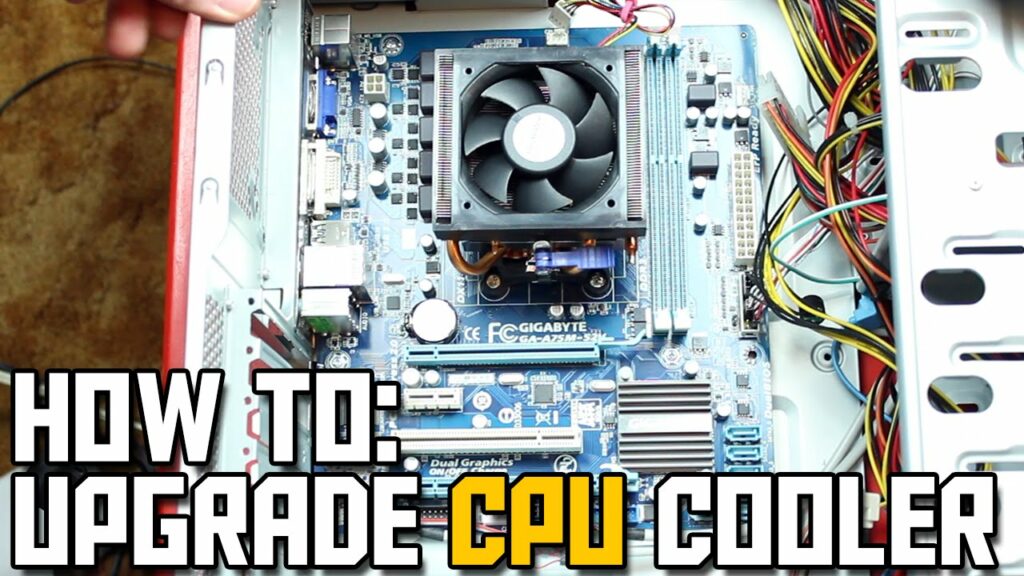How to upgrade a CPU cooler

Upgrading your CPU cooler is a practical and often beneficial step to enhance the cooling performance of your computer, whether for improved thermal management, quieter operation, or better overclocking potential. This comprehensive guide will walk you through the process of upgrading your CPU cooler, covering preparation, choosing the right cooler, installation steps for different types of coolers, testing, and maintenance tips.
Table of Contents
- Introduction to Upgrading a CPU Cooler
- Importance of CPU Cooling
- Benefits of Upgrading CPU Cooler
- Choosing the Right CPU Cooler
- Air Coolers vs. Liquid Coolers
- Factors to Consider
- Preparation
- Tools and Materials Needed
- Preparing Your Work Area
- Installing the New CPU Cooler
- Installing an Air Cooler
- Installing a Liquid Cooler
- Connecting and Testing
- Connecting Cooler to Motherboard
- Testing the New Cooler
- Maintenance and Troubleshooting
- Maintaining Your CPU Cooler
- Troubleshooting Common Issues
- Conclusion
1. Introduction to Upgrading a CPU Cooler
Importance of CPU Cooling
Efficient CPU cooling is essential to maintaining optimal performance and longevity of your processor. A well-functioning CPU cooler helps dissipate heat generated during operation, preventing thermal throttling and potential damage caused by overheating.
Benefits of Upgrading CPU Cooler
- Improved Cooling Performance: Upgrading to a more efficient cooler can lower CPU temperatures, allowing for better stability and potentially higher overclocking capabilities.
- Reduced Noise Levels: Quieter fans and advanced cooling technologies can provide quieter operation compared to stock coolers, enhancing overall system comfort.
- Aesthetic Enhancements: Many aftermarket coolers offer RGB lighting or sleek designs that can improve the visual appeal of your PC build.
2. Choosing the Right CPU Cooler
Air Coolers vs. Liquid Coolers
- Air Coolers: Utilize air as the cooling medium, typically consisting of heatsinks and fans to dissipate heat. They are generally easier to install and maintain, with a wide range of sizes and performance levels available.
- Liquid Coolers: Use liquid (usually water or coolant) to transfer heat away from the CPU. Liquid coolers often provide superior cooling performance and can be more effective in compact or overclocked systems.
Factors to Consider
- CPU Compatibility: Ensure the cooler is compatible with your CPU socket type (e.g., LGA 115x, AM4).
- Cooling Performance: Consider thermal dissipation capacity, fan size, and noise levels under load.
- Case Compatibility: Check clearance for radiator size (if using liquid cooler) and overall dimensions within your PC case.
3. Preparation
Tools and Materials Needed
- New CPU Cooler: Selected based on compatibility and desired performance characteristics.
- Thermal Paste: High-quality thermal compound for effective heat transfer between CPU and cooler.
- Screwdriver Set: Typically Phillips-head or hex drivers for installation.
- Isopropyl Alcohol and Lint-Free Cloth: To clean CPU surface before applying thermal paste.
Preparing Your Work Area
- Clear Workspace: Ensure a clean, well-lit area with enough space to work comfortably inside your computer case.
- Static Electricity Precautions: Use an anti-static wrist strap or frequently touch a grounded metal surface to prevent static discharge that could damage sensitive components.
4. Installing the New CPU Cooler
Installing an Air Cooler
- Remove Old Cooler: Disconnect fan power cable and unscrew mounting screws or clips securing the old cooler to the motherboard.
- Clean CPU Surface: Use isopropyl alcohol and a lint-free cloth to thoroughly clean any old thermal paste residue from the CPU heat spreader.
- Apply Thermal Paste: Apply a small, pea-sized amount of thermal paste to the center of the CPU heat spreader. Avoid spreading the paste; pressure from the cooler will evenly distribute it.
- Install New Cooler: Place the new air cooler onto the CPU, aligning it with the mounting holes around the CPU socket. Secure it by fastening screws or clips in a diagonal pattern to ensure even pressure.
Installing a Liquid Cooler
- Prepare Case: Determine the optimal location for the liquid cooler radiator (e.g., top or front of case) and ensure sufficient clearance for mounting.
- Mount Radiator: Secure the radiator to the case using included screws or brackets, ensuring it is firmly attached and aligned for airflow.
- Attach CPU Block: Install the CPU block onto the CPU, applying thermal paste as described earlier. Secure the block to the CPU socket following manufacturer instructions for your specific cooler model.
- Connect Fans and Pump: Connect radiator fans to the appropriate headers on the motherboard or fan controller. Connect the pump to a dedicated CPU fan header or designated pump header on the motherboard.
5. Connecting and Testing
Connecting Cooler to Motherboard
- Fan Headers: Connect CPU cooler fans to the CPU fan header on the motherboard for proper speed control and monitoring.
- Pump Connection: Ensure the liquid cooler pump is connected to a dedicated pump header or CPU fan header that provides constant power.
Testing the New Cooler
- Power On: Turn on your computer and enter BIOS/UEFI setup to monitor CPU temperatures and fan speeds.
- Stress Testing: Use stress testing software (e.g., Prime95, AIDA64) to load the CPU and monitor temperature performance. Ensure temperatures remain within safe limits for your CPU model.
6. Maintenance and Troubleshooting
Maintaining Your CPU Cooler
- Regular Cleaning: Remove dust buildup from heatsinks and fan blades to maintain airflow and cooling efficiency.
- Coolant (Liquid Coolers): Monitor coolant levels (if applicable) and replace as recommended by the cooler manufacturer to prevent corrosion or pump issues.
- Check for Leaks: Periodically inspect liquid cooler fittings and tubes for signs of leaks or corrosion.
Troubleshooting Common Issues
- High Temperatures: Ensure cooler is securely mounted with proper thermal paste application. Verify fan speeds and airflow configuration.
- Noise Levels: Adjust fan speeds through BIOS/UEFI settings or with software utilities to achieve a balance between cooling performance and noise levels.
7. Conclusion
Upgrading your CPU cooler can significantly enhance the overall performance and reliability of your computer system, whether for gaming, content creation, or professional applications. By following the steps outlined in this guide, you can successfully choose, install, and test a new CPU cooler, ensuring efficient thermal management and optimal CPU performance. Regular maintenance and monitoring will help prolong the life of your cooler and maintain consistent cooling performance over time. With proper installation and care, a new CPU cooler can provide quieter operation, improved overclocking potential, and enhanced stability for your computing needs.




